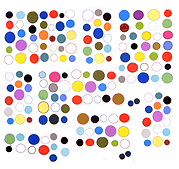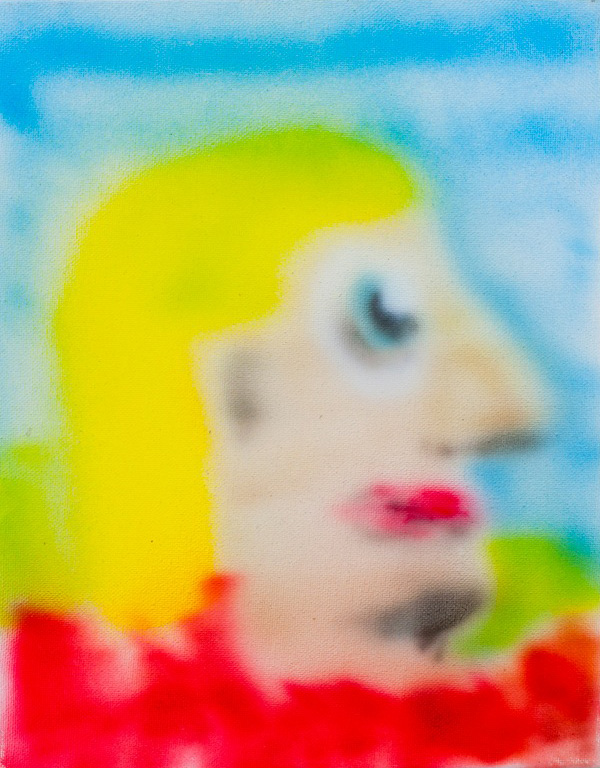Notes for Silent and Spectral LP on Bandcamp. These are mostly tech jottings so I remember what I did. Any thoughts, questions, etc on the music itself are welcome at the email address on this about page.
1. Silent and Spectral 02:45
The Expert Sleepers module and related Silent Way software allow you to run a modular synth from a PC. The ES-4 converts audio from your sound card into calibrated control voltages, eliminating the need for a midi-to-cv converter for LFOs, envelopes, pitch and gate functions. The timing is tighter than midi-to-cv and the LFOs are more configurable than hardware LFOs. It's the devil to install in Cubase, however, which isn't flexible in its routing possibilities. So in this tune I was stacking some of the CV outs so they were out of tune or overlapping, because I had multiple instances of the plugin open. I think. The main revelation was using the ES to play tunes solely in filter modules, from the input of sustained single notes from oscillators. Tiptop Audio's Z3000, SID GUTS (the crunchy rhythms in the middle), and possibly some other modules generated the raw sounds.
The beat that runs throughout is a drum loop I made, playing through the Spektral Delay effect, as described below.
2. Silent but Gutsy 02:33
Used the Expert Sleepers ES-4 module and Silent Way plugins to trigger modular synth patches, then recorded and arranged them in Cubase. Writing these notes a few weeks after the fact, I already can't reconstruct the specifics, or which modules I used. I'm guessing the SID GUTS for the SID-sounding stuff. The infectious piano sample thing at the beginning was, I'm pretty sure, the ADDAC wav player. The beats were done separately in Reaktor using Beatslicer with delay and compression FX, then cut and pasted into the song. Feeling like the whole was too thin, texture-wise, I probably overcompensated with the boomy "sub bass" basslines, using the Linplug Alpha synth.
3. Rack Dance 3 02:34
Using the Octatrack as a MIDI sequencer triggering four channels in the modular synth.
The recording is done in Cubase and edited as a single mono file, then mixed down to stereo.
The other "rack dances" have drums but this is four distinct synth voices. The sequencer pulse provides the rhythm. Might do another version with drums.
The appeal for me here is the always-slightly-drifting-out-of-tune quality of the monosynths against fairly tightly organized musical (harmonic) patterns. Some steel drum/gamelan associations without being particularly "world."
4. Two Rhythms 02:29
This started out as two different beats, each in its own section, made using a delay that Native Instruments no longer offers (Spektral Delay), ported in from an older PC in real time as an external hardware effect (note: about 150 ms of latency).
Then I cut it into loops, moved it to the Octatrack, and added older (Reaktor Titan) synth riffs sliced into new patterns. Went a little overboard with the "loop" function where a single note repeats in a stutter but have never done anything quite like this, ultimately.
5. Fog Computing Variation 02:50
Spent some time crafting a bleep in the modular. An LFO was triggering it about 127 bpm. I added pitches and made a tune, recorded it, and then played it twice, four steps apart, to create a delay.
Then parts from "Fog Computing" were added, and some beats. It needed more so I wrote some softsynth tunes as counterpoint and imported them into the Octatrack. The USB cable is moving a fair amount of audio back and forth between the Octatrack and PC these days, at least until something is finalized in one or the other location.
This is pretty spare, robotic, and demo-like, but that's intended.
6. Slow and Go 01:18
Octatrack playing modular patch(es) with some overdubbing/multitracking in the sequencer.
In the patch an LFO is opening a filter frequency control in one synth on the upstroke and closing on the down, the inverse of the same wave is opening and closing a volume gate on another synth.
While this is going on continuously a 1V/OCT signal plays a tune.
Things I learned doing this:
How to use a "scene" in the Octatrack arranger to switch delay effect on and off in a single track.
Slicing an LFO-d wave into 64 slices and then muting every other slice to get an additional gating effect.
Tempo changes in the arranger to make these "gated" slices play faster and slower in sync with the percussion.
This is mostly analog but sounds computer-gamy due to MIDI-triggering and "simple waveforms."
7. The Lost Gig 01:41
The insectile buzzing background thing is an FM-modulated LFO sweeping a high pass filter (modular/hardware). Graphically the waveform resembles a Slinky flexing.
The "lead" is another LFO sweeping a wavetable in a chord (softsynth). The lament is half digits, half voltages.
Dedicated to friends slapped down hard by the Invisible Hand just because it can.
8. Three Note Bass 02:58
This piece rings some changes -- at a fairly basic compositional level -- with the Tiptop Z2040 filter module. A low-fi sample plays through the filter at three different settings, all with gain cranked up in the clipping level, which causes pleasing distortion. The settings are: frequency knob at 2:00, frequency knob almost all the way open, and frequency knob at 2:00 with resonance cranked (causing that eerie whine).
There is a gratuitous dubstep interlude to make one appreciate the bass variations, then back to those variations, then fin. Played and arranged in the Octatrack sequencer; monaural recording mixed down to a stereo file.
9. Small Rack Duo 01:30
A duet or duo between two modular synth patches plays continuously (with some post-production to fix things such as dropped notes in the live recording). It seemed too thin (again) so I added a synth bass line, and then some percussion halfway through.
10. The Lost Gig (Acid House Version)
Continuing to experiment with Octatrack features and effects:
--Altering sample rates of drum samples (for example, the tom roll is a slowed-down clap)
--Using a "neighbor machine" for a primitive effect chain (as in two effects, but hey, I'm still learning, and had been wondering how to apply delay and reverb to the same track)
--Autopanning two tracks using inverted LFO waveforms so two loops crisscross throughout the song (the bubbly sounds are some "Fog Computing" riffs run through the Mutator filter and sampled).
The NI Massive tremelo-y patch I wrote and used in "The Lost Gig" makes another appearance halfway through. That's me playing the numerals 3-5-2-3 on my alphanumeric computer keyboard.

